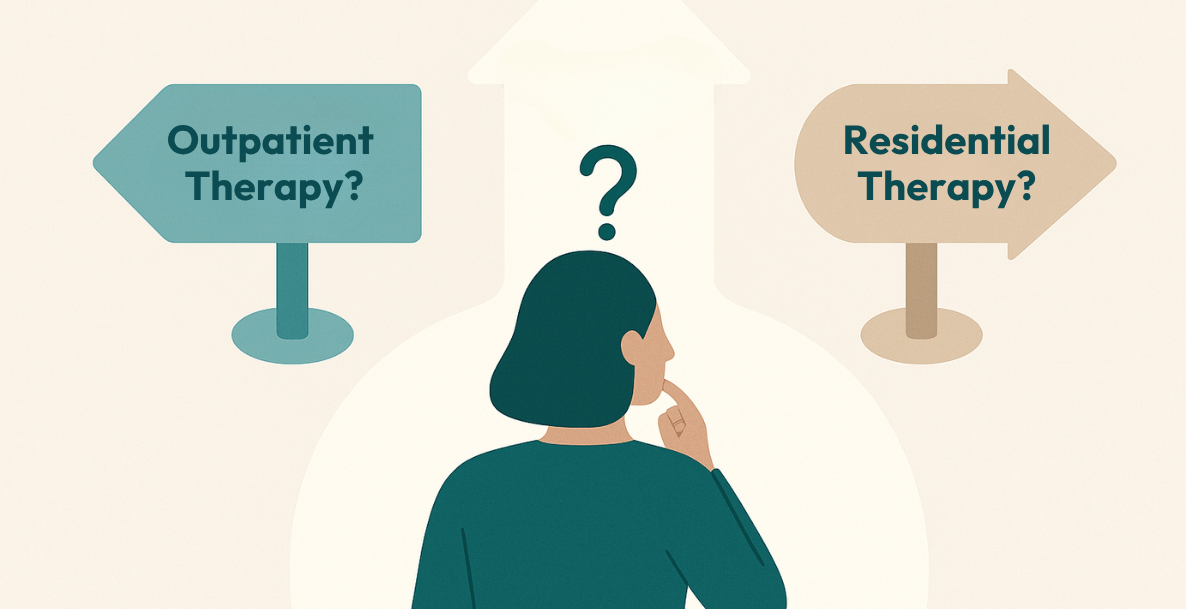Our nervous systems are designed to respond to stress and failure, and it’s these experiences that build resilience. The concept of nervous system regulation will be familiar to those interacting with the online mental health sphere. While greater awareness of the impact of chronic nervous system dysregulation is essential, it has become a buzzword and much of the nuance and meaning has been lost.
In the online world of well-being, regulation is often heralded as a state in which we should live our lives, but this is impossible. While it is important to reflect on environments, people, and triggers that contribute to activation and make choices, boundaries or changes in life to prioritise psychological safety, we cannot avoid activation entirely. A healthy nervous system rides waves of activation and returns to balance, or regulation, rather than remaining calm at all times.
When confronted with stressors, the sympathetic nervous system initiates an activation response, heightening vigilance and physiological readiness, which can cause intense discomfort for many, and even trigger memories of past situations that caused similar somatic responses.
However, regulation hinges on the ability to down-regulate this heightened state, returning to baseline functioning. This process involves activating the parasympathetic nervous system, promoting relaxation and restoration. Techniques such as deep breathing, progressive muscle relaxation, and mindfulness cultivate this capacity for self-regulation, enabling individuals to navigate stressors while maintaining equilibrium in their nervous system’s functioning.

Download the Brochure
Discover Our Innovative Trauma Recovery Pathway
What is The Nervous System?
The nervous system is the intricate communication network that orchestrates various physiological functions and responses within the body. Made up of the brain, spinal cord, and nerves, it regulates conscious and subconscious activities such as speech, movement, organ function, and emotional responses.
Through a complex interplay of electrical impulses and chemical signals, the nervous system coordinates the body’s actions and reactions to internal and external stimuli. It plays a crucial role in maintaining homeostasis – or balance – and ensuring that bodily systems function harmoniously to support overall health and well-being. In essence, the nervous system acts as the body’s command centre, continuously processing information and directing appropriate responses.
What Do ‘Regulation’ and ‘Dysregulation’ Mean?
The terms regulation and dysregulation can be confusing and are often misused online. The nervous system is regulated when the sympathetic nervous system and the parasympathetic nervous systems are operating in harmony, maintaining a balance between the body’s fight-or-flight response and its rest-and-digest functions. Dysregulation occurs when this balance is disrupted.
The sympathetic nervous system is responsible for the fight or flight response and preparing the body for action in response to stress or danger. On the other hand, the parasympathetic nervous system is often called the rest and digest system because it promotes relaxation, digestion, and helps to restore the body’s energy reserves, two divisions of the autonomic nervous system that work together to regulate involuntary bodily functions.
Dysregulation is different from activation, something that can be misleading online. Sympathetic nervous system activation is not inherently a problem, it is a process that has ensured the survival of humans for hundreds of thousands of years. Many people associate dysregulation with sympathetic nervous system activation.
This is in part because it produces the most obvious effects such as hypervigilance. This has led to a generally false narrative that a dysregulated nervous system always looks dramatic – like fight or flight responses – and that a regulated nervous system is always calm. There are two issues with this idea.
Firstly it misses the experience of those stuck in a chronic freeze state, or who have an overactive stress response that generally results in freeze. Secondly, it can prevent people from healing past trauma due to the idea that calmness is synonymous with regulation. Somatic experiencing research recognises that reaching perceived safety – weeks, years, or decades – after trauma can pave the way for the release of energy from the stress response activation that has been stored in the nervous system. While this may appear distressing and cause great discomfort, it is a healthy part of the healing process.
How Can The Nervous System Become Dysregulated?
Nervous system dysregulation can be triggered by immediate conflicts, like arguments with a partner, or by enduring stressors, such as the strains of a prolonged pandemic or toxic work environments.
Traumatic Experiences
Physical, emotional, or psychological trauma, especially during childhood, can disrupt the normal functioning of the nervous system. Traumatic experiences can lead to alterations in brain structure and function, affecting areas involved in stress response, emotion regulation, and memory processing.
Chronic Stress
Prolonged exposure to stressors, such as financial problems, relationship issues, or work-related stress, can dysregulate the stress response system, including the hypothalamic-pituitary-adrenal (HPA) axis and the sympathetic nervous system. This can lead to heightened sensitivity to stress, increased levels of stress hormones, and impaired regulation of bodily functions.
Genetics
Genetic factors can predispose individuals to nervous system dysregulation. Certain genetic variations may affect neurotransmitter levels, receptor sensitivity, or the functioning of neural circuits involved in mood regulation, cognition, and behaviour. However, it is difficult to distinguish the impact of genetics from parenting styles and home environments during childhood.
Early Life Experiences
Renowned researcher and clinician Gabor Maté highlights how childhood experiences impact the nervous system by shaping our responses to emotional challenges and interpersonal dynamics. He explains that growing up in environments where parental reliance on us for support or the suppression of emotions was common can contribute to the development of coping mechanisms that persist into adulthood.[1]
Maté emphasises that children raised in environments marked by adversity, neglect, or emotional turmoil often develop coping strategies to navigate these challenges. These coping mechanisms may involve suppressing emotions, seeking external validation, or adopting caretaking roles beyond their years. While these strategies may serve as adaptive responses to immediate stressors, they can also contribute to long-term dysregulation of the nervous system.
Many researchers have also highlighted how early bonding experiences with caregivers influence the development of neural circuits involved in emotional regulation.[2] Disruptions in secure attachment can lead to difficulties in self-soothing and regulating emotions, laying the groundwork for nervous system dysregulation later in life.
Substance Abuse
The use of drugs or alcohol can disrupt neurotransmitter systems in the brain, leading to dysregulation of mood, cognition, and behaviour. Chronic substance abuse can also damage brain structures and impair the normal functioning of the nervous system.
Chronic Illness
Certain medical conditions, such as autoimmune disorders, neurological diseases, or chronic pain conditions, impact the nervous system and contribute to dysregulation. Inflammation, oxidative stress, and neurodegeneration associated with these conditions can disrupt neural communication and affect overall nervous system function.
Psychological Factors
Psychological factors, such as chronic anxiety, depression, or unresolved emotional issues, can influence nervous system function and contribute to dysregulation. Negative emotions and maladaptive coping strategies can perpetuate stress responses and exacerbate symptoms of nervous system dysregulation.
Explore Our Treatment Options
Find Out What Makes Us Different
The staff at our globally recognised mental health clinic have been informed, trained and supervised by some of the world’s leading trauma experts such as Dr Bessel van der Kolk, Dr Janina Fisher, Dr Stephen Porges, Dr Dick Schwartz and more.
How to Begin Riding Waves of Activation and Returning To Balance
The nervous system can adapt to varying levels of activation while maintaining overall balance. Life is filled with fluctuations, and the nervous system must constantly adjust to meet the demands of different situations. Dysregulation makes this process incredibly difficult, but there are strategies and therapeutic approaches that directly address the issue of nervous system dysregulation.
Daily Somatic Approaches
- Practise slow, rhythmic breathing: Altering breathing patterns affects the body’s physiology and behavioural responses through the vagal pathways. Take slow, deep breaths to induce a calming effect on heart rate and cortisol levels. Inhale and exhale gradually, ensuring each breath lasts a minimum of five seconds.
- Utilise cold water: Immerse yourself in a cold shower or splash cold water on your face for 30 seconds to activate the vagus nerve. Alternatively, hold an ice cube against your face if running water is unavailable. Simultaneously, visualise a serene setting that fosters a sense of security.
- Engage in vocalisations: Engaging in vocalisations such as humming, singing, and gargling can directly stimulate the vagus nerve, triggering the body’s relaxation response. Softly hum or sing while focusing on the gentle vibrations in your vocal cords. Gargling with water induces vagus nerve stimulation through vibrations in both the vocal cords and eardrums.
Therapeutic Approaches
Therapeutic modalities that emphasise safety and empowerment, such as trauma-informed yoga or trauma-sensitive mindfulness, provide a supportive framework for individuals to explore their physical sensations and emotional experiences at their own pace.[3]
Khiron Clinics specialises in polyvagal-informed therapy that directly works with the nervous system, offering a wide variety of approaches to heal the underlying causes of mental health issues, often rooted in unfinished responses to earlier threats.
Sources:
[1] Maté, G. (2023). Scattered minds: The origins and healing of attention deficit disorder. Avery.
[2] Schore, Allan. EFFECTS OF A SECURE ATTACHMENT RELATIONSHIP ON RIGHT BRAIN DEVELOPMENT, AFFECT REGULATION, AND INFANT MENTAL HEALTH. INFANT MENTAL HEALTH JOURNAL, Vol. 22(1–2), 7–66 (2001
[3] Porges, Stephen W. “The Polyvagal Theory: New Insights Into Adaptive Reactions Of The Autonomic Nervous System”. Cleveland Clinic Journal Of Medicine, vol 76, no. 4 suppl 2, 2009, pp. S86-S90. Cleveland Clinic Journal Of Medicine, doi:10.3949/ccjm.76.s2.17. Accessed 01 June 2021.






